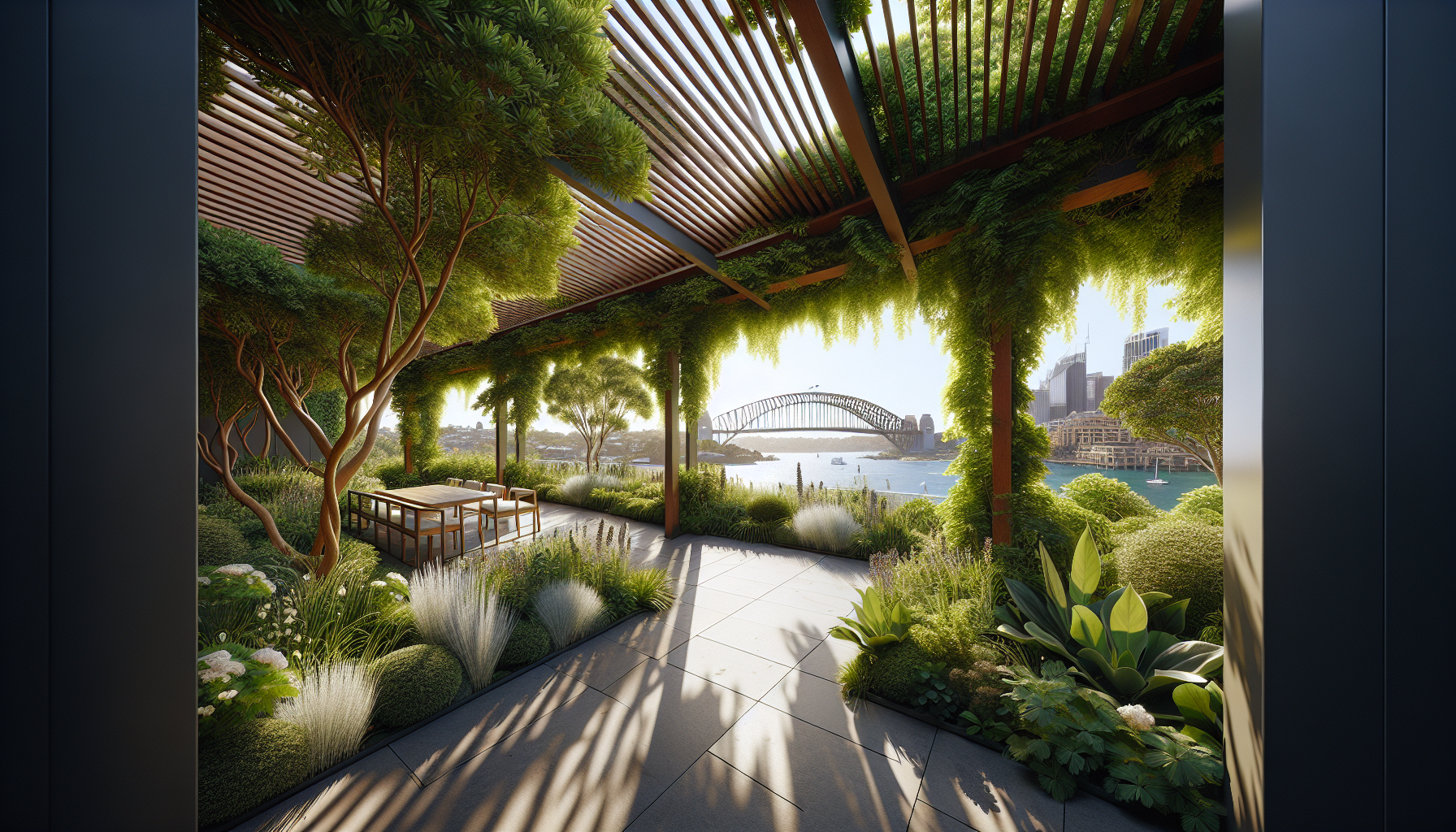What is a Carport Cantilever and How Does it Enhance Your Property?
A carport cantilever is an innovative structural feature that extends a carport’s roof without the need for supporting columns or posts on one or more sides. This design not only provides a sleek, modern aesthetic but also offers practical advantages, enhancing the functionality and value of your property.
Maximizing Usable Space: One key benefit of a carport cantilever design is the maximization of usable space. Without columns or posts, you have more freedom to maneuver vehicles and utilize the area beneath the carport for storage or other activities. This open space is particularly advantageous for properties with limited room, allowing you to park larger vehicles or multiple cars side by side without obstruction.
Architectural Appeal:
Incorporating a cantilever into your carport’s design can significantly improve its architectural appeal. The clean lines and floating appearance of a cantilevered carport create a contemporary look that complements your home’s style. This can boost curb appeal and, potentially, the resale value of your property. The cantilever design is functional and serves as a statement piece, demonstrating an attention to innovative design and modernism.
Durability and Protection:
Carport cantilevers are constructed with durability in mind. These structures can withstand various weather conditions by utilizing robust materials and engineering techniques, providing reliable protection for your vehicles and outdoor equipment. The absence of posts also means fewer points of potential weakness or decay over time, ensuring a longer lifespan for the structure. Moreover, the overhead protection offered by a cantilevered carport shields your assets from rain, snow, and harmful UV rays, which can deteriorate vehicle finishes and interiors over time.
Choosing a carport cantilever is not only a practical decision but also an investment in your property’s aesthetics and durability. Its multifaceted benefits, ranging from enhanced visual appeal to improved space utilization and protection, make it an ideal option for homeowners seeking to add value and convenience to their outdoor space.
Designing Your Carport Cantilever: Things to Consider
When designing a cantilever carport, several key factors must be considered to ensure a balance of functionality, durability, and aesthetics. The choice of materials, the weather conditions in your area, and the actual design specs are all pivotal to creating a structure that not only looks good but also lasts.
Material Selection for Durability and Style
First and foremost, material selection plays a critical role in the success of your cantilever carport. Not all materials are equal when it comes to durability and style. High-grade aluminum or reinforced steel offers robustness and longevity, while wood may provide aesthetic warmth but requires more maintenance. Consider the local climate: areas with heavy snowfall or high winds need materials and a design adept at handling these stresses.
Space Usage and Proportions
Furthermore, consider the proportions of your carport cantilever. The overhang length should provide adequate vehicle coverage while complementing the overall property layout. A carport that is too large can overwhelm a space, whereas one that is too small can appear incongruous and offer insufficient protection. It is important to strike the right balance, considering the carport’s size relative to the space available and intended usage.
Local Building Codes and Regulations
Lastly, never overlook the importance of adhering to local building codes and regulations. These rules may influence the maximum allowed size of your carport, the required setbacks from property lines, and other structural requirements. Failing to comply could lead to fines or being ordered to dismantle the structure. Therefore, before you commence the building process, secure all necessary permits and ensure your design conforms to all the local guidelines.
By accounting for these considerations, your carport cantilever will be well-designed and a lasting investment that meets your practical needs and aesthetic preferences.
Step-by-Step Installation Guide for a Cantilever Carport
Installing a cantilever carport can vastly improve the convenience and safety of your vehicle parking solution. With its sturdy design and lack of central supports, a cantilever carport offers a clean and aesthetically pleasing look while maximizing the use of space. To ensure a smooth installation process, follow this comprehensive guide. Remember, before you start, you must have all the necessary tools and permission from local authorities if required. Safety should be your top priority throughout the installation.
Preparing the Installation Site
Begin by selecting the optimal location, usually along the driveway or attached to an accessible wall of your house. Clear and level the area diligently, removing any debris, rocks, or vegetation that may obstruct the foundation. It’s crucial to check that the surface is completely level using a spirit level. Once the site is prepared, mark the positions where the posts will be installed. Precision is key for a successful cantilever carport installation—double-check the area’s measurements and post placement against the manufacturer’s specifications.
Setting Up the Base and Posts
The foundation of your carport is fundamental to its durability and stability. Dig the holes for the posts according to the depth recommended in the carport manual, usually at least a few feet deep to provide sufficient anchorage. Use concrete to set the posts in place, and employ temporary braces to keep them upright and properly aligned as the concrete cures. It’s vital to ensure the posts are exactly vertical, as any deviations can compromise the structural integrity of the carport.
Assembling the Structure
With the posts set and the concrete cured, it’s time to construct the frame of your cantilever carport. Securely attach the beams and arms that will support the carport’s ‘roof’ to the posts using the provided hardware. Following the manufacturer’s instructions carefully is important to ensure all pieces are fitted together correctly. Safety equipment such as gloves and protective glasses should be used to handle materials and when drilling or cutting. A helping hand can be invaluable during this phase to manage the heavy lifting and to ensure all components are aligned before they are permanently fixed.
Once the frame is assembled, you can mount the roof panels. Start from one end and work systematically towards the other, fastening each panel as per the instruction manual. Employing a sealant along the edges of the roof panels is a good practice to prevent leaks. Regular checks for alignment and tightness of fasteners will prevent future issues and maintain the resilience of your new cantilever carport.
Maintaining Your Carport Cantilever for Longevity
Regular Inspection and Maintenance Checks
Maintaining a carport cantilever begins with regular inspections to identify any signs of wear and tear that could compromise its structural integrity. At least twice a year, consider the entire structure, focusing on critical components such as support beams, roof panels, and anchoring systems. It’s crucial to check for rust, especially in areas where bolts and joints connect, since these are high-stress points. If any component shows signs of deterioration, it’s important to address it promptly to prevent more significant problems.
Cleaning and Protective Measures
Keeping your carport cantilever clean is more than just an aesthetic concern—it can significantly impact the structure’s lifespan. Leaves, dirt, and debris can lead to water retention and, eventually, rust or corrosion. Regular cleaning with the appropriate detergents will keep your carport looking good and mitigate potential damage. To go further, apply a protective sealant or rust inhibitor to metal parts to ward off elemental damage. If you live in an area with severe weather, consider investing in sidings for additional protection.
Managing Load and Stress
The cantilever design is inherently strong, but managing the load placed upon your carport is still important to prevent undue stress and ensure longevity. Be mindful of snow accumulation during winter; excess weight from snow and ice can overload the structure. It’s wise to remove snow promptly to avoid straining the cantilever. Similarly, keep climbing vines and other vegetation in check since these can add unintended weight and compromise structural materials through invasive roots or moisture retention.
Comparing Carport Cantilever Costs: Is it a Cost-effective Solution?
When assessing the cost-effectiveness of carport cantilever constructions, a diverse array of factors come into play that can sway the overall expense. Initially, the materials chosen for the cantilever design had a significant impact. Options range from wood, steel, or aluminum, each carrying its price points and durability benefits. Steel is often favored for its resilience and low maintenance, but upfront costs can be higher than wood. Aluminum strikes a balance, offering reduced weight and resistance to corrosion, possibly leading to longer-term savings despite its initial investment.
Installation expenses must also be scrutinized. Cantilever carports demand precise engineering and specialized labor, which can contribute to a steeper installation bill. However, their minimalistic structure tends to require less construction material than a traditional carport, potentially cutting down on costs. Moreover, the lack of support columns in cantilever designs saves space and reduces material costs. The trade-off lies in the requisite expertise and labor to ensure a secure installation, emphasizing the importance of skilled contractors who may command higher wages.
Ongoing maintenance is a further consideration in the cost-effectiveness equation for cantilever carports. The durability of the structure is crucial to mitigate repair expenses over time. For instance, a roaring metal cantilever with a high-quality protective coating could offer substantial longevity with minimal need for upkeep, thereby offering better cost savings in the long run. On the contrary, cheaper materials or lax maintenance schedules may result in recurrent costs that could diminish the carport’s cost-effectiveness.
Tax incentives and local regulations may also influence the financial viability of carport cantilever installations. Some regions provide deductions or credits for structures that meet certain environmental or safety standards. Leveraging these benefits can considerably offset initial expenditures. Additionally, ensuring compliance with local building codes can avoid costly fines or modifications post-construction, an essential consideration when evaluating the long-term cost efficiency of the cantilever carport solution.




